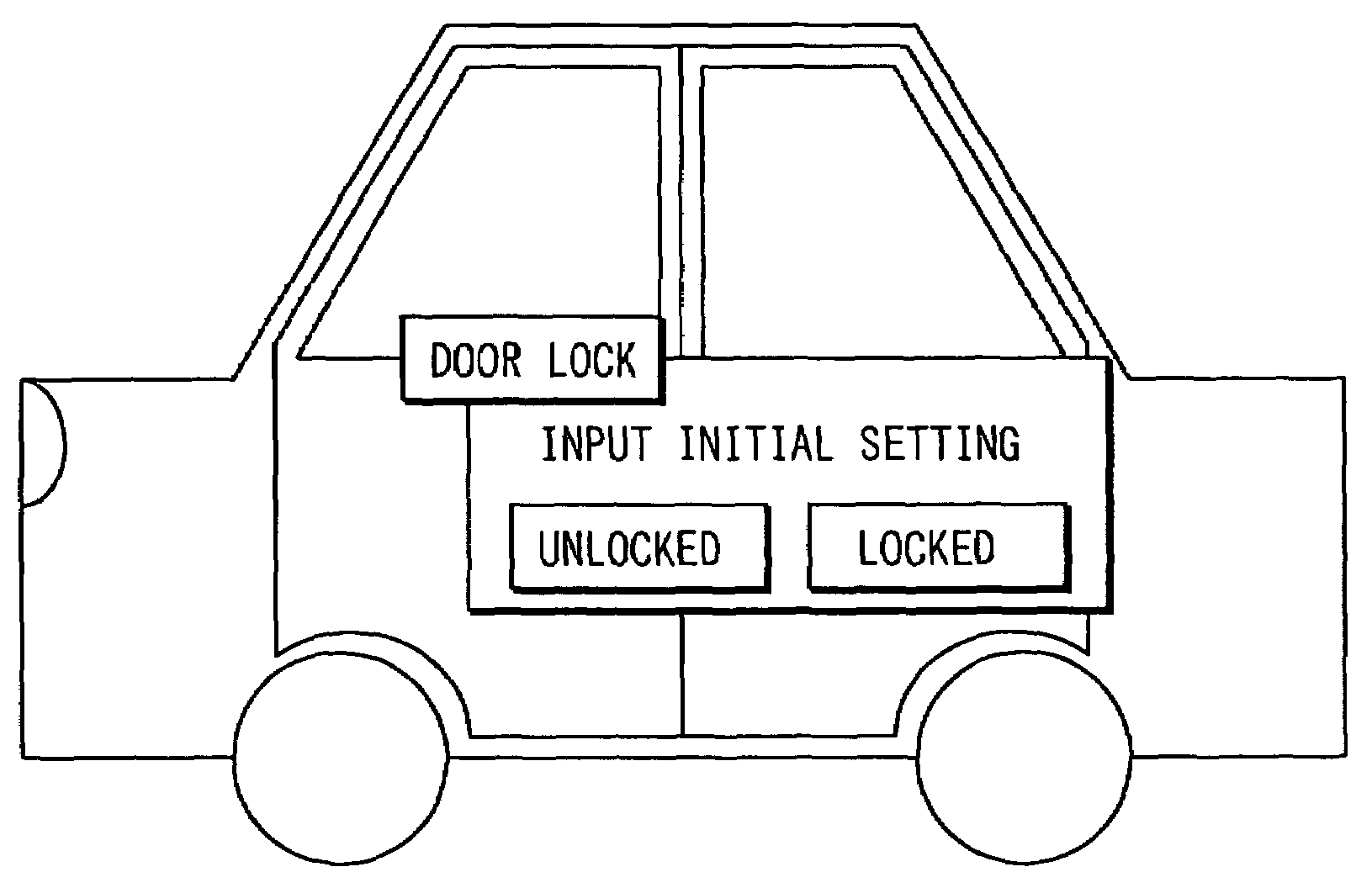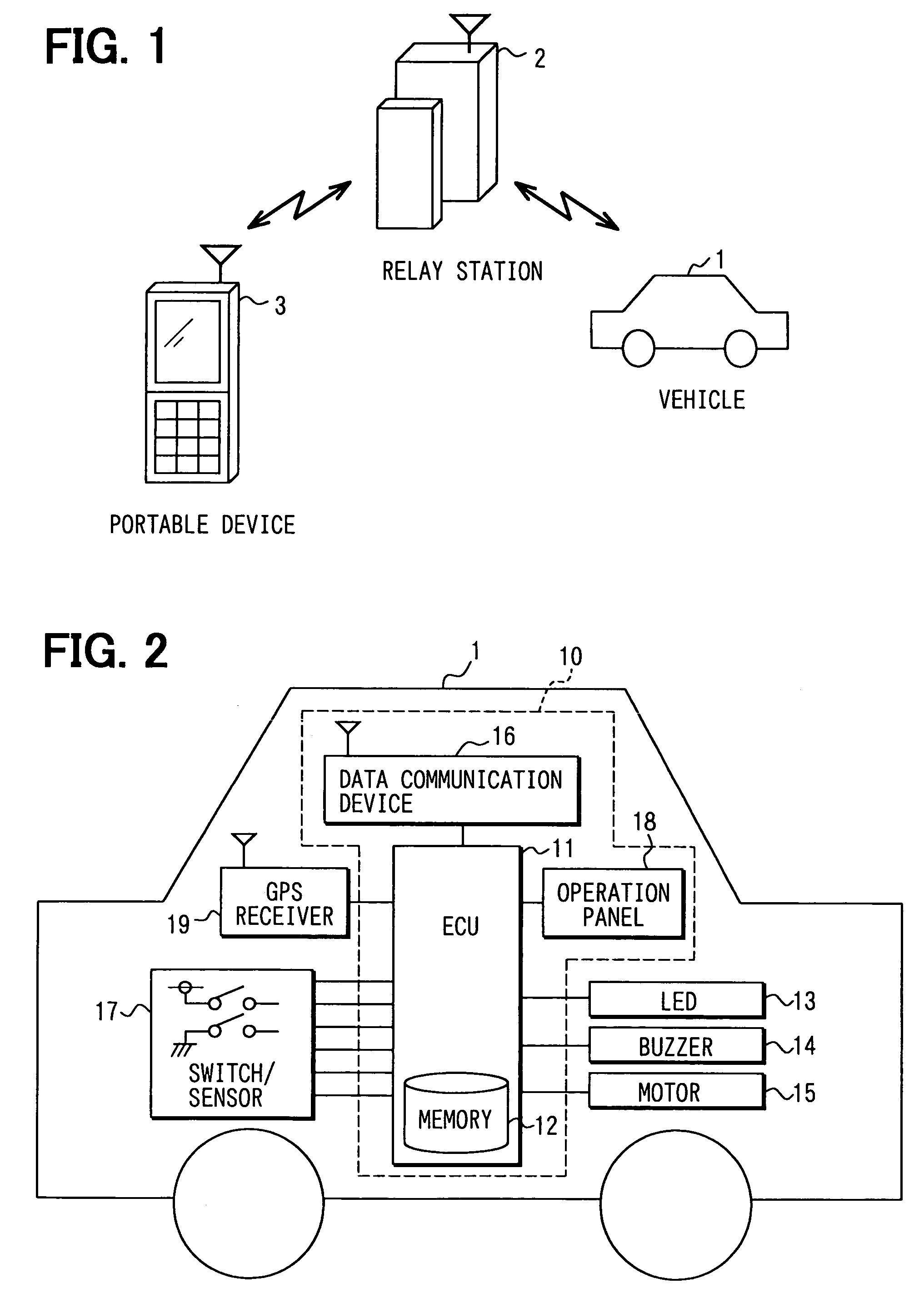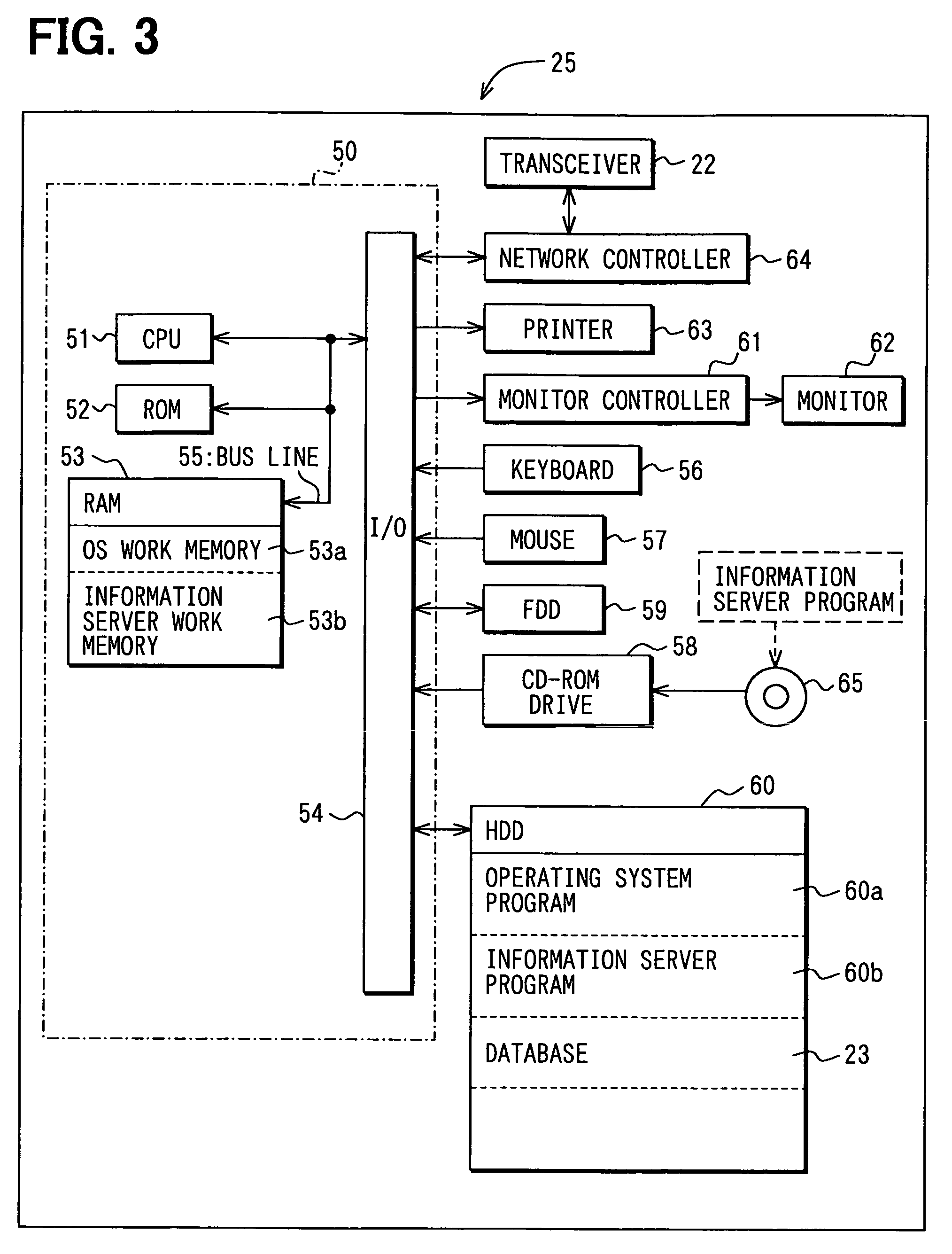Vehicle condition monitoring system
a condition monitoring and vehicle technology, applied in the direction of navigation instruments, instruments, anti-theft devices, etc., can solve the problems of confused users sometimes misusing, vehicle in a decreased security condition, and not necessarily improving the convenience of users with smart keys, so as to reduce the risk of vehicle theft
- Summary
- Abstract
- Description
- Claims
- Application Information
AI Technical Summary
Benefits of technology
Problems solved by technology
Method used
Image
Examples
first embodiment
[0039]The vehicle condition monitoring system shown in FIG. 1 includes a vehicle 1 and a portable device 3. The portable device 3 in this embodiment is represented as a cell phone of a well-known type. The portable device 3 may also be a personal computer, a personal digital assistant, a transmitter (i.e., a key) of a wireless door lock having a reception function or any other device that is equipped with a communication function.
[0040]The automotive device 10 installed on the vehicle 1 is explained with reference to FIG. 2. The automotive device 10 includes an ECU (Electric Control Unit) 11 and a data communication device 16. The ECU 11 includes various components (not shown in the figure) such as a CPU, a ROM, a RAM of well-known types, an I / O circuit, a bus line, a signal circuit for switch / sensor 17, an operation panel 18, an indicator LED 13, a buzzer 14 and a signal output circuit of a motor 15. The CPU is controlled by a program and data stored in the ROM and the RAM. The ROM...
second embodiment
[0061]The initial setting of the vehicle may be set by using the portable device such as the cellular phone or the like. The portable device receives the warning when the actual state is different from the initial setting. The portable device and vehicle of this second embodiment may be represented by the portable device 3 and the vehicle 1 of the first embodiment illustrated in FIG. 1.
[0062]The portable device 3 may be used to set the initial setting of the vehicle 1 in this embodiment. An input window for the initial setting may be displayed on a display of the portable device by an input from a dial key or a function key of the portable device for allowing the user of the vehicle to specify the initial setting of the door (open / closed), the time slot for activating the initial setting, the place for activating the initial setting and the like. The initial setting may be sent to the automotive device on the vehicle 1 when, for example, a “Complete” button is pressed. The automotiv...
third embodiment
[0065]The portable device and the vehicle can be relayed by using a relay station. The vehicle 1, a relay station 2 and the portable device 3 in FIG. 1 collectively represent a scheme of this embodiment. The vehicle 1, the relay station 2 and the portable device 3 are communicatively connected through the wireless communication network. The portable device 3 in this embodiment is a well-known type cellular phone. The portable device 3 may also be a personal digital assistant (PDA), a transmitter of a wireless door lock having a reception function, or any other device that is equipped with a communication function.
[0066]First, the relay station 2 is explained. The relay station 2 includes an information server 25 and a transceiver 22 that exchanges data with the data communication device 16 on the vehicle 1.
[0067]An example of the information server 25 is shown in FIG. 3. The information server 25 includes a CPU 51, a ROM 52, a RAM 53 and an input / output interface (I / O) 54, collectiv...
PUM
 Login to View More
Login to View More Abstract
Description
Claims
Application Information
 Login to View More
Login to View More - R&D
- Intellectual Property
- Life Sciences
- Materials
- Tech Scout
- Unparalleled Data Quality
- Higher Quality Content
- 60% Fewer Hallucinations
Browse by: Latest US Patents, China's latest patents, Technical Efficacy Thesaurus, Application Domain, Technology Topic, Popular Technical Reports.
© 2025 PatSnap. All rights reserved.Legal|Privacy policy|Modern Slavery Act Transparency Statement|Sitemap|About US| Contact US: help@patsnap.com



